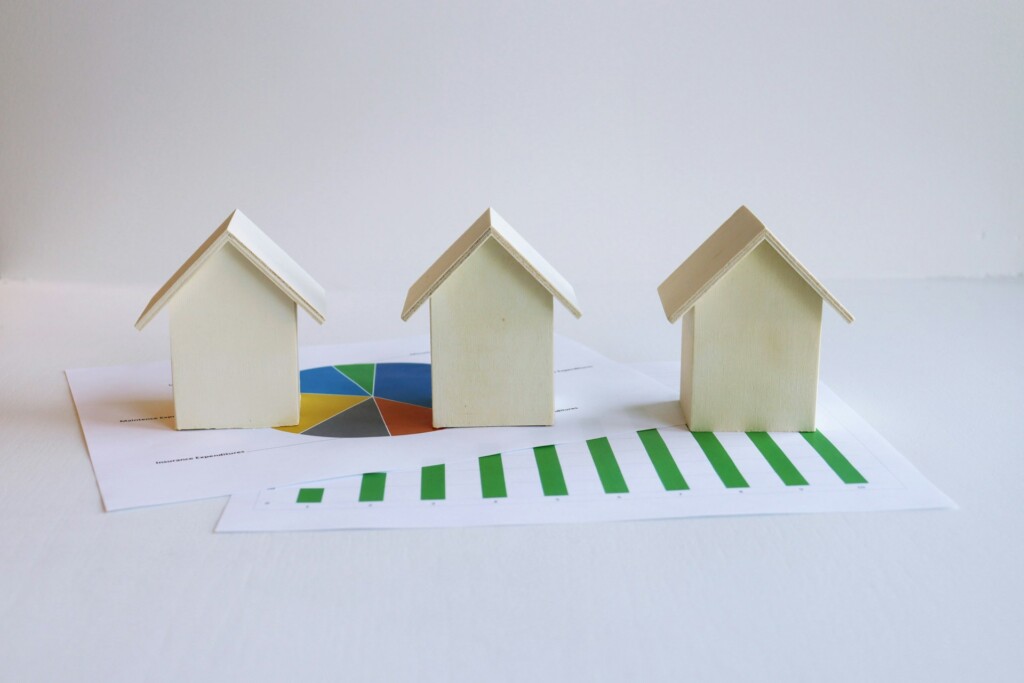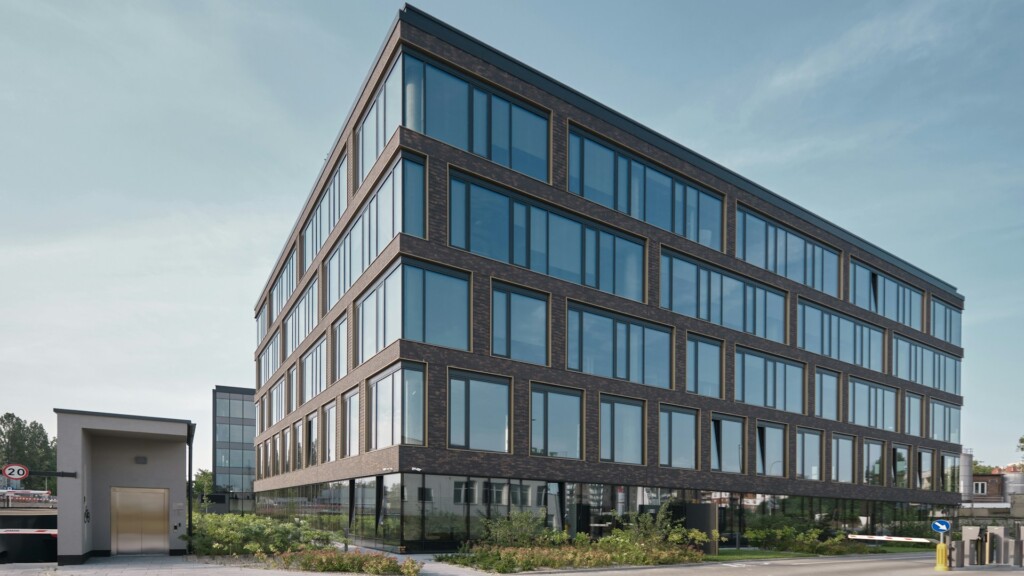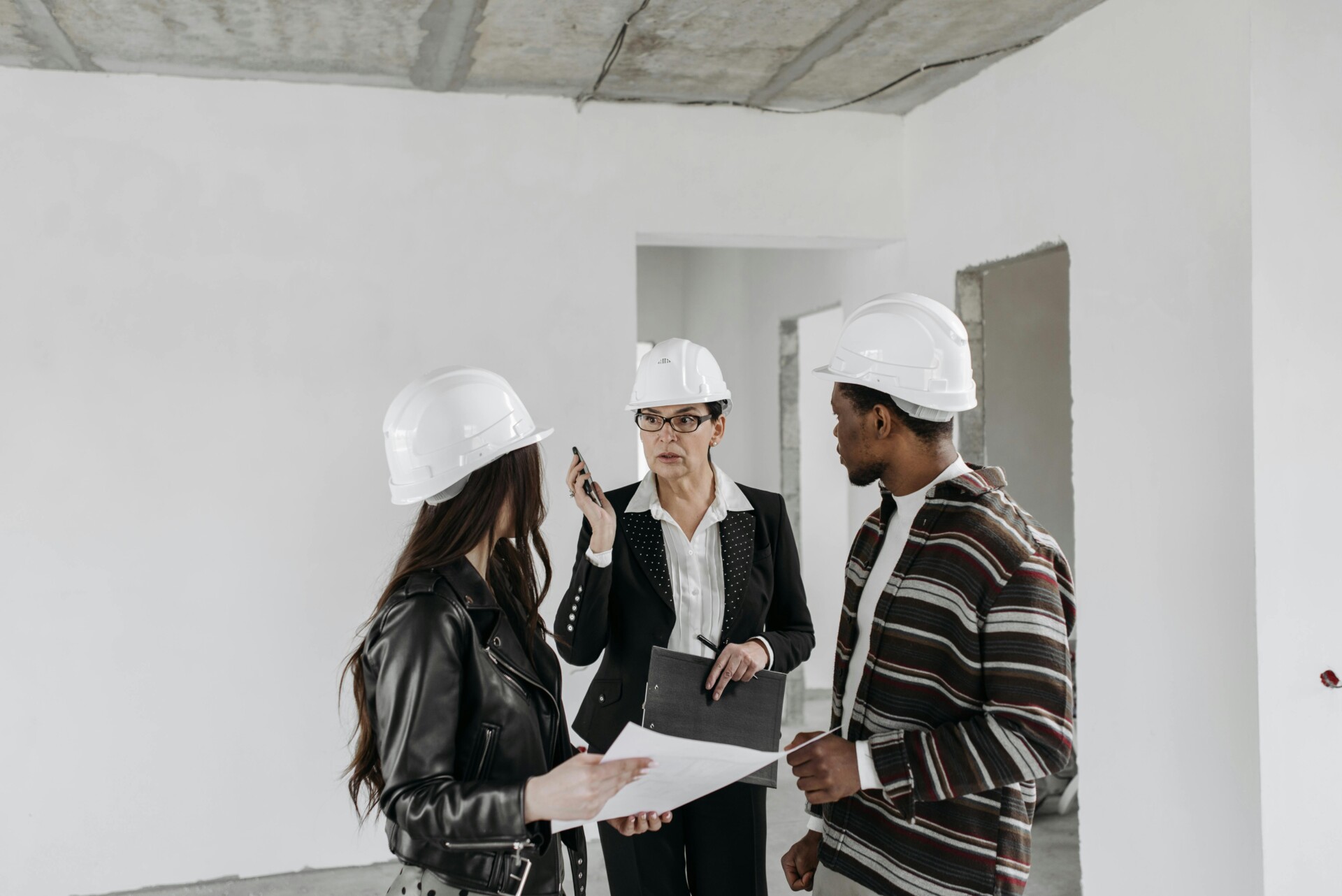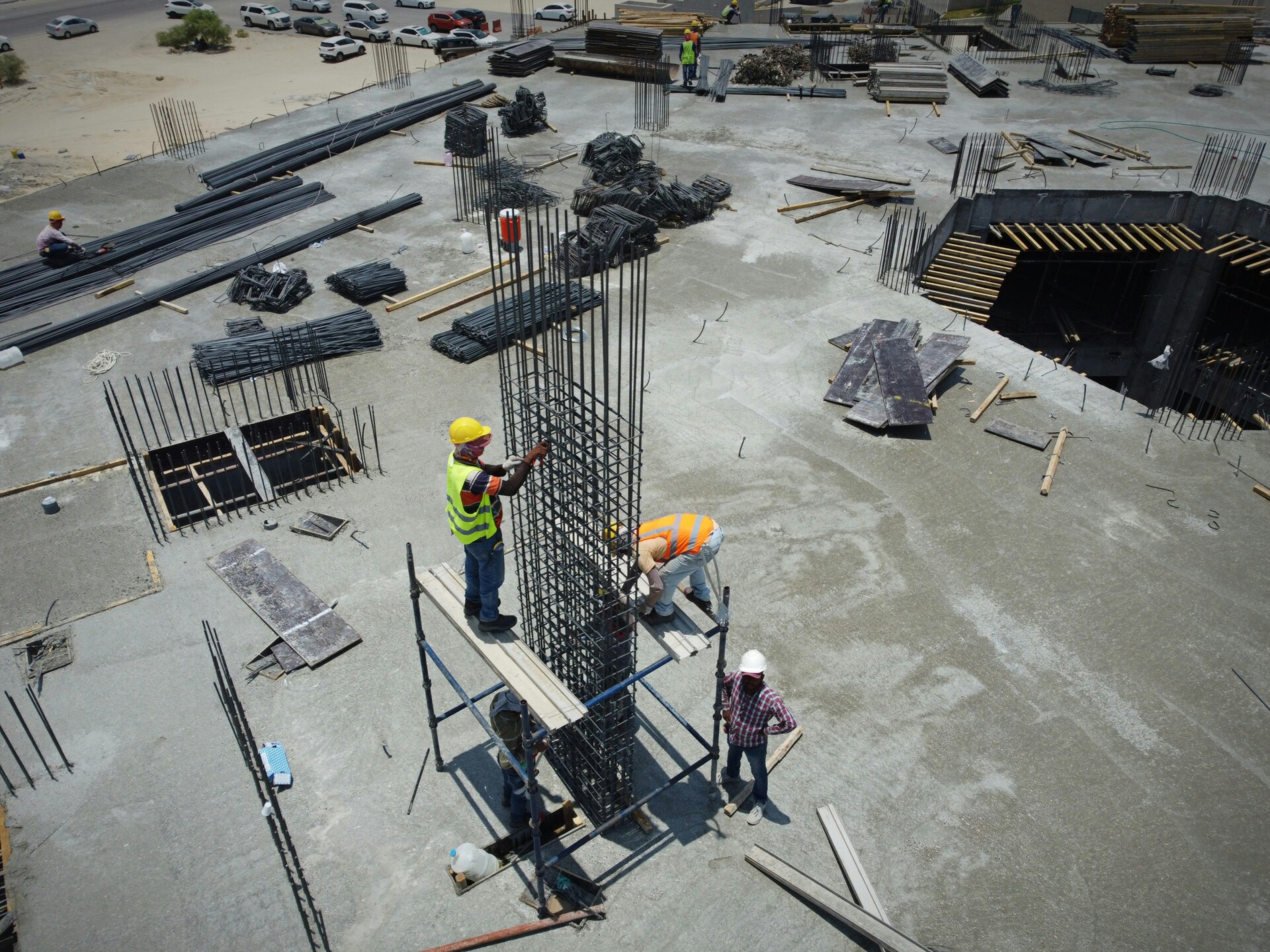Commercial building cost per square foot typically ranges from $240 to $870 nationally, with an average around $560. However, outliers exist from as low as $70 for basic parking structures up to $1,270 for premium facilities like museums or performing arts centers.
Building shell costs can start around $80 to $375 for certain low-rise construction, while high-specification multi-story offices trend toward the upper end of the spectrum. Location factors, finish level, and market conditions create significant variance in these baseline figures.
What Factors Drive The Cost Per Square Foot?

Multiple variables interact to determine your commercial building cost per square foot. Location stands as the primary driver, with coastal areas and major metropolitan markets commanding premium pricing due to higher land values and complex regulatory environments. Regional climate variations also influence construction techniques, with seismic zones requiring specialized engineering and hurricane-prone areas demanding enhanced structural systems.
Building type, size, and quality specifications significantly impact your budget. High-rise office buildings demand sophisticated structural systems and vertical transportation that single-story facilities avoid. Class A buildings incorporate premium materials and advanced systems that Class B or C properties typically exclude, reflecting different market positioning and tenant expectations.
Construction method selection directly affects material quantities and labor requirements. Pre-engineered metal buildings (PEMB) utilize standardized components and efficient assembly processes. Metal stud framing offers design flexibility with moderate costs, while structural steel enables large spans but requires specialized trades. Tilt-up concrete provides durability and thermal performance through different construction sequences.
Interior finishes and mechanical, electrical, and plumbing (MEP) systems represent substantial cost variables. Higher-grade interior finishes increase material and installation costs significantly. Complex MEP systems, particularly in specialized facilities, can consume approximately 13% of the total budget through sophisticated HVAC, advanced electrical distribution, and specialized plumbing requirements.
Labor costs typically account for 20% to 40% of total construction expenses, fluctuating based on local wage rates, union presence, and skill availability. Material selection affects both direct costs and installation complexity. Current supply chain conditions continue to influence pricing volatility, with material costs experiencing periodic fluctuations of 3% to 6%.
Foundation requirements and site preparation add significant expense beyond the building shell. Foundation work generally represents 10% to 11% of total costs, though complex soil conditions or challenging topography can increase these percentages. Excavation, grading, and utility connections require additional capital based on existing site conditions and infrastructure proximity.
Soft costs encompass professional services and regulatory requirements that support construction activities. Design fees range from 2.5% to 12% depending on project complexity and consultant requirements. Building permits and regulatory fees typically consume 0.5% to 3% of project costs, varying by jurisdiction and project scope.
How Does Cost Per Square Foot Vary By U.S. Region?
Regional variations create significant cost spreads across the United States, with geographic differences often determining project feasibility. We track these variations carefully since a project’s location alone can swing costs by 30% to 70% from the national average.
Commercial construction costs vary substantially across the four major regions. The East commands the highest premiums, ranging from $350 to $870 per square foot for all building types combined. Western markets follow closely with $380 to $850 per square foot, driven by seismic requirements and coastal labor markets. The South offers more competitive pricing at $240 to $680 per square foot, while the Midwest provides the most cost-effective environment at $270 to $760 per square foot.
Single-Story Office Regional Benchmarks
Single-story office construction provides clear regional comparisons since these buildings avoid the complexity variables of multi-story construction. The Midwest offers the strongest value proposition, with costs ranging from $237 to $298 per square foot. Southern markets remain competitive at $238 to $286 per square foot, benefiting from favorable labor rates and extended construction seasons.
Eastern markets command premium pricing for single-story offices, ranging from $301 to $361 per square foot. Dense metropolitan areas like New York City, Boston, and Washington D.C. drive these elevated costs through union labor requirements and stringent building codes. Western regions show costs of $313 to $378 per square foot, with seismic design requirements and environmental regulations contributing to higher totals.
Key Regional Cost Drivers
Labor markets create the most significant regional differences. Eastern and Western coastal cities typically see unionized trades commanding 20% to 40% higher wages than non-union markets in the South and Midwest. We coordinate with local subcontractors early to understand these market dynamics and their impact on project budgets.
Building codes and regulatory environments vary dramatically by region. California’s seismic requirements add specialized engineering costs, while northeastern cities often require enhanced structural systems for snow loads and wind resistance. Permit review times also differ substantially, with major metropolitan areas sometimes requiring 6 to 12 months for complex commercial approvals compared to 30 to 60 days in smaller markets.
Material transportation and availability affect regional pricing structures. Coastal markets face higher logistics costs for steel and concrete delivery, while Midwest locations benefit from proximity to manufacturing centers. Fuel costs and transportation capacity can add 5% to 15% to material expenses in remote or congested markets compared to centrally located projects with good transportation access.
What Are Typical Costs Per Square Foot By Building Type?

Building purpose drives significant cost variation in commercial construction. Office buildings require different systems than healthcare facilities, while educational buildings demand different structural elements than retail spaces.
Office Buildings
Office construction costs scale with building height and complexity. Single-story office buildings average $313 per square foot, providing straightforward construction with minimal structural challenges. Mid-rise office buildings jump to $562 per square foot due to elevator systems, enhanced structural requirements, and more complex MEP installations.
High-rise office buildings reach $660 per square foot as projects demand advanced structural steel, sophisticated fire safety systems, and premium mechanical systems. We coordinate these multi-story projects with specialized engineering teams to manage the increased complexity and code requirements.
Hospitality Facilities
Hotel construction varies dramatically by service level and amenities. Three-star hotels average $478 per square foot, incorporating standard guest room finishes, basic common areas, and moderate mechanical systems. Five-star hotels escalate to $691 per square foot with luxury finishes, extensive common areas, premium mechanical systems, and specialized amenities like spas or conference facilities.
These hospitality projects require careful coordination of guest room layouts, common area flow, and back-of-house operations. We work closely with hospitality consultants to optimize layouts for both guest experience and operational efficiency.
Industrial and Warehouse Facilities
Industrial construction offers some of the most cost-effective commercial building options. Standard industrial buildings average $214 per square foot, utilizing straightforward structural systems and basic finishes. Light industrial warehouses increase slightly to $238 per square foot with enhanced loading facilities and improved environmental controls.
Laboratory facilities represent the high end at $635 per square foot, requiring specialized HVAC systems, chemical-resistant materials, and complex utility infrastructure. These projects demand precise coordination with laboratory consultants and specialized subcontractors familiar with research facility requirements.
Healthcare Construction
Healthcare facilities command premium construction costs due to stringent regulatory requirements and specialized systems. Medical office buildings average $498 per square foot, incorporating medical-grade finishes, specialized HVAC systems, and enhanced electrical capacity for medical equipment.
Specialty clinics reach $619 per square foot with procedure-specific requirements and specialized equipment accommodations. Acute care facilities top the healthcare category at $888 per square foot, demanding complex mechanical systems, emergency power systems, medical gas installations, and regulatory compliance across multiple healthcare codes.
Educational Buildings
Educational construction varies by grade level and facility complexity. K-12 schools average $295 to $359 per square foot, incorporating classroom layouts, common areas, and basic laboratory spaces. These projects require careful attention to safety codes, accessibility requirements, and durable finishes suitable for high-traffic environments.
University buildings demand higher investment levels. University classrooms average $580 per square foot with enhanced technology infrastructure and flexible layouts. University laboratories reach $756 per square foot due to specialized utility requirements, fume hood systems, and chemical-resistant construction. Dormitories offer relative efficiency at $322 per square foot, utilizing repetitive unit layouts and standardized finishes.
Retail Construction
Retail construction costs span a wide range based on location and tenant requirements. Retail stores vary significantly by state, ranging from $190 to $473 per square foot depending on local market conditions, finish levels, and specialized fixtures. Shopping centers average $370 to $580 per square foot, incorporating common areas, specialized HVAC systems, and infrastructure for multiple tenants.
We coordinate retail projects with consideration for customer flow, merchandise display requirements, and tenant improvement allowances that affect overall project budgets.
Public and Community Facilities
Public buildings require substantial investment due to accessibility requirements, public safety standards, and durability specifications. Recreation centers average $403 per square foot, incorporating specialized flooring, HVAC systems for varied activities, and extensive common areas.
Government facilities demand higher construction standards. Police stations average $580 per square foot with security systems, holding facilities, and specialized communication infrastructure. Government administration buildings reach $591 per square foot due to accessibility compliance, security requirements, and durable construction standards.
Museums and performing arts centers top the public facility category at $892 per square foot. These specialized facilities require acoustic engineering, climate control systems for artifact preservation, specialized lighting, and complex structural systems for large open spaces.
Parking Structures
Parking structures offer the most economical commercial construction option, ranging from $70 to $210 per square foot depending on design complexity and site conditions. Above-ground surface lots represent the lowest cost option, while multi-level structures increase costs due to structural requirements and ventilation systems.
Low-grade multi-level parking structures average around $143 per square foot, providing functional vehicle storage with basic structural systems and minimal finishes. We coordinate parking structure projects with attention to drainage, ventilation, and traffic flow patterns that affect both construction costs and long-term maintenance requirements.
How Do Construction Methods Change The Cost Per Square Foot?
Construction method selection fundamentally alters project economics. We approach each project knowing that the structural system drives everything from material procurement to labor coordination and timeline management.
Pre-Engineered Metal Buildings deliver the most economical solution across most commercial applications. PEMB systems cost $75 to $295 per square foot for complete construction, including materials, foundation work, and typical finishing packages.
Metal stud framing runs slightly higher at $80 to $300 per square foot. This approach works well for office buildings and retail spaces where design flexibility matters more than absolute cost efficiency.
Structural steel construction ranges from $105 to $330 per square foot. We recommend this method for multi-story buildings or projects requiring heavy loading capacity and maximum span capabilities.
Tilt-up concrete represents the highest initial investment at $140 to $375 per square foot. However, it provides excellent durability and works particularly well for large-scale warehouses and distribution centers exceeding 50,000 square feet.
Understanding Shell Costs Versus Complete Construction
Building shell costs tell only part of the story. PEMB shells typically run $20 to $35 per square foot before any interior work begins.
Light-gauge steel framing costs mirror PEMB at $20 to $35 per square foot for shell construction. Structural steel shells cost significantly more at $45 to $60 per square foot, reflecting the material’s higher strength and the specialized fabrication required.
Tilt-up concrete shells fall in the middle range at $40 to $55 per square foot. The on-site casting process and crane requirements drive these baseline costs higher than metal alternatives.
Interior Finishes Drive Total Project Investment
Finishes represent the largest variable in any construction budget. Basic warehouse finishes add $50 per square foot to shell costs, while high-end office specifications can reach $250 per square foot or more.
We coordinate finish specifications early in the design process to avoid budget surprises. Class A office spaces demand premium materials and complex MEP systems that significantly impact the final per-square-foot cost regardless of structural method.
Industrial applications typically require minimal finishing, keeping total costs closer to shell pricing. Retail and healthcare projects fall somewhere between these extremes, depending on tenant requirements and operational needs.
Conclusion and Next Steps

Setting an accurate target cost per square foot requires careful alignment of regional factors, building type, and construction method. Start with the national ranges we’ve outlined, then refine your estimates based on design complexity, finish level, and specific site conditions. The calculation process involves multiplying your total project area by the relevant cost per square foot benchmark, then adjusting for soft costs like permits and design fees, plus a reasonable contingency buffer.
For project accuracy, we recommend working collaboratively with EB3 Construction, your architect, and structural engineer from the early planning stages. Request multiple local quotes to validate your estimates against current market conditions. To control construction spend, consider strategic approaches including design-build delivery methods, prefabrication or modular construction systems, systematic value engineering, energy-efficient building systems, bulk purchasing arrangements, and thorough project planning with contingency frameworks.
Contact EB3 Construction to discuss your commercial building cost planning and construction feasibility analysis.




